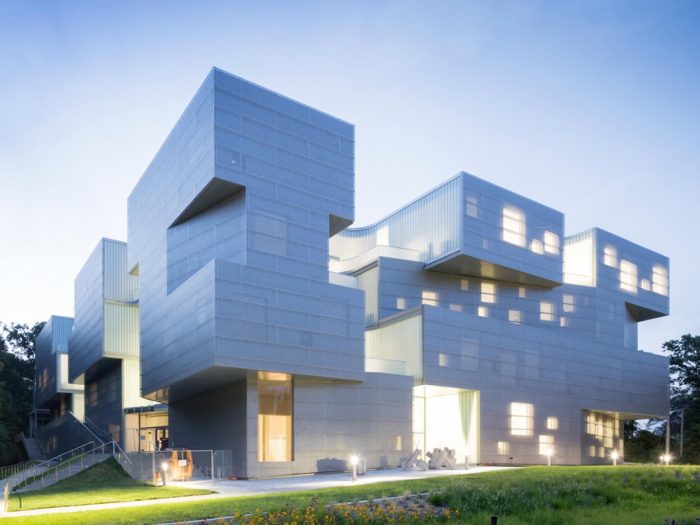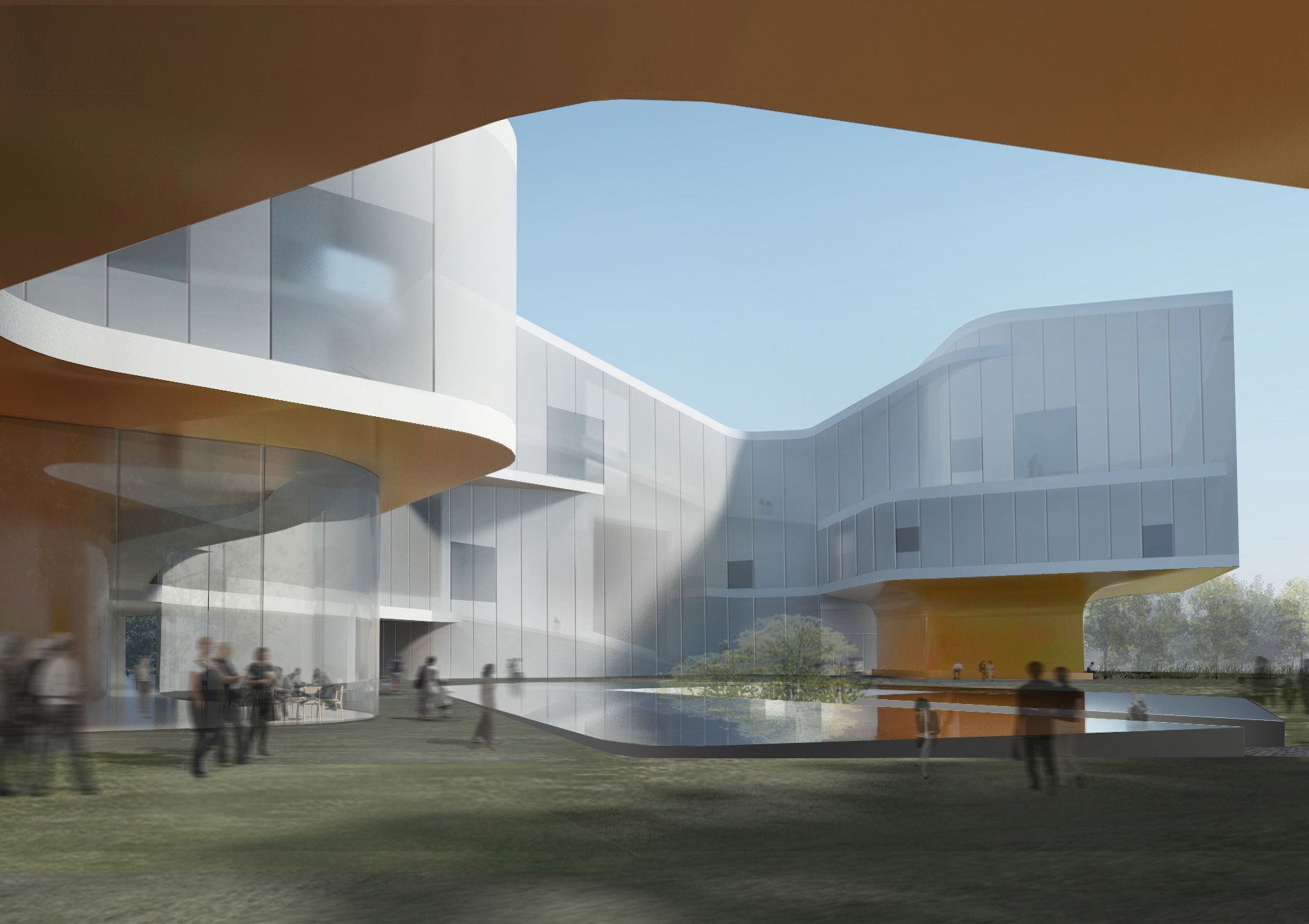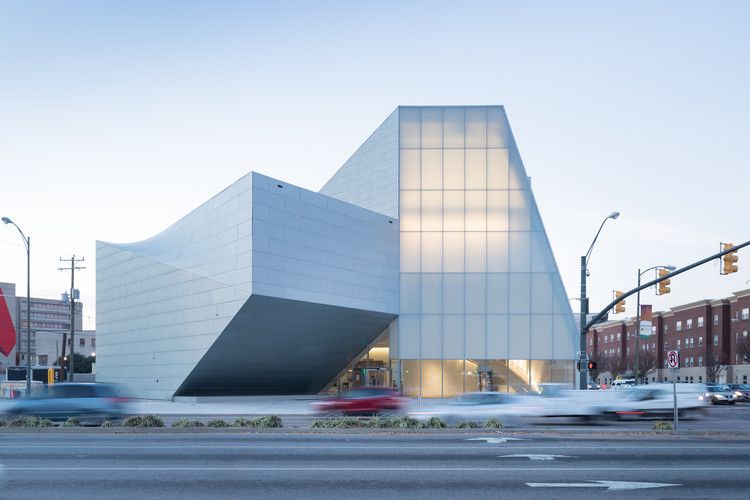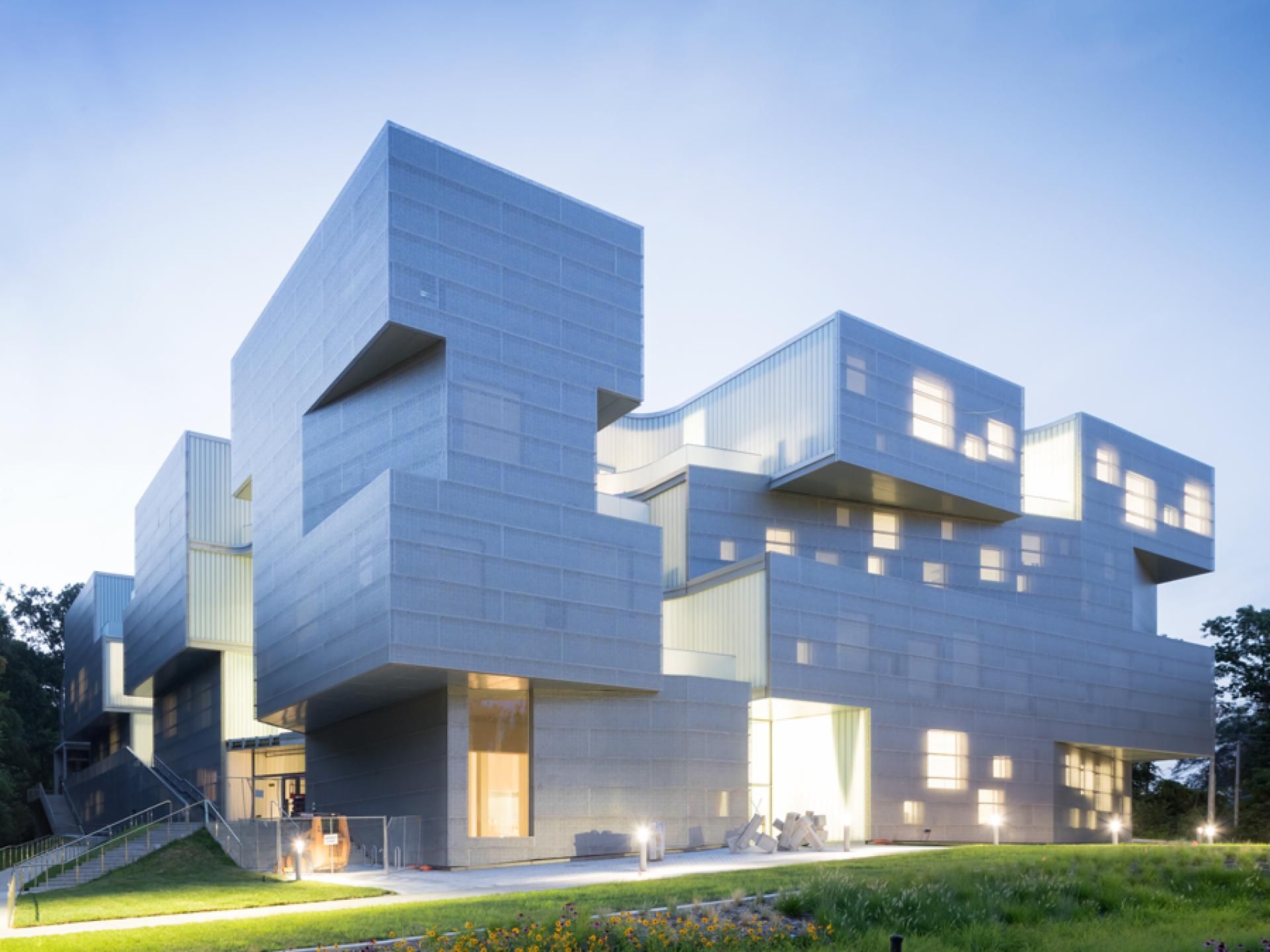I must admit, at the first I was skeptical; perhaps at some part of me, I still am. But when you see these massive, 21 million year old megaliths illuminated from within and arrayed around a shallow reflecting pool- the effect is enough to give one pause.
These massive hunks of stone which defy classification in singular terms, are Steven Holl’s Inversion. What began as a watercolour painting, was interpreted by the architect/artist to be milled from limestone using a 5-axis CNC mill. Originally quarried at Lecce, Italy, the six stone solids went on display at Milan’s Designweek 2013 and will eventually end their journey in Princeton, New Jersey, installed at the new Steven Holl designed Performing Arts Center at Princeton University.
Measuring 1.2 meters in height and each weighing in at 1133 kg, the volumes appear as snapshots in time. Movement has been caught and distilled in solid rock. But then again, maybe that isn’t it. There is a definite sectional quality to the six volumes. Perhaps it isn’t that movement has been caught, but that stasis has been solidified and revealed. The internal relationships between that which is concrete and that which is absent are revealed through a cut seemingly too perfect for stone. At night, these voids are illuminated, giving the pale coloured limestone a warm, living glow.
The volumes cease to be one homogenous material and the relationship of bounding to bound- once difficult to discern, becomes stark and clear; shadow against light, it is beautiful.
Courtesy of Steven Holl
Courtesy of Steven Holl
Courtesy of Steven Holl
Courtesy of Steven Holl
Courtesy of Steven Holl
Courtesy of Steven Holl











